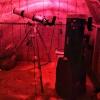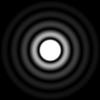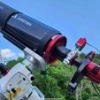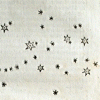
f/5.6, 2x35min, Kodak E200 push 1
The my older attemp can be seen here. This time, I decided to try dividing the exposure into two shorter pushed exposure, as successfully practiced by Dave Kodama. The total exposure time is approximately the same, the f-number and the place of photographing too. I changed the Takumar version of the lens for the newest SMC version and the films was developed by different labs. The newer photo is definitively sharper. But it is also much more grainy. Don't be confused by the darker look of the older image, it's only a matter of processing. Maybe I will reprocess the older image, as some parts of it look completely black on my monitor (maybe it's getting old).
Have you tried stacking several shorter exposures instead of taking one long continuous? After this experience, I'm not going to keep practicing this technique. I would rather consider combining several long exposures, if I wanted to reduce grain.





















